Range Rover Evoque: Differential Case Vehicles With: M66 6-Speed Manual Transmission AWD
Removal
NOTE: Removal steps in this procedure may contain installation details.
1. WARNING: Make sure to support the vehicle with axle stands. Raise and support the vehicle.
2. Remove the LH rear wheel and tire.
Refer to: Wheel and Tire (204-04 Wheels and Tires, Removal and Installation).
3. Refer to: Exhaust System (309-00B Exhaust System - TD4 2.2L Diesel, Removal and Installation).
4. Refer to: Rear Halfshaft LH (205-05 Rear Drive Halfshafts, Removal and Installation).
5. CAUTION: Make sure that the driveshaft is supported with suitable retaining straps.
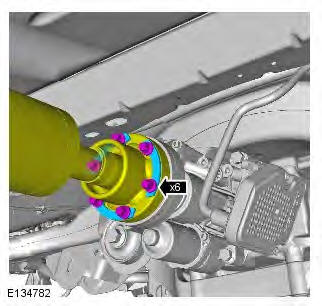
6.
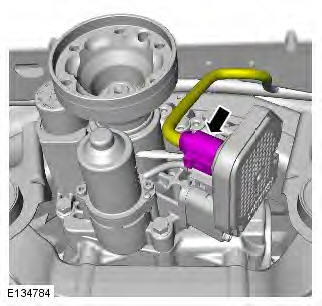
7.
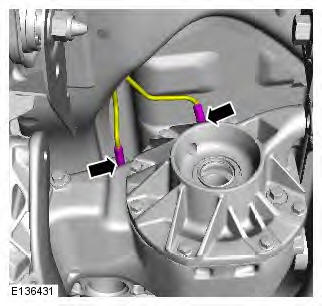
8. Using a transmission jack, support the differential case.
9.
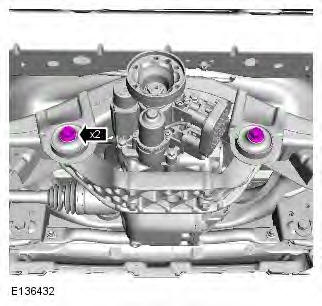
10.
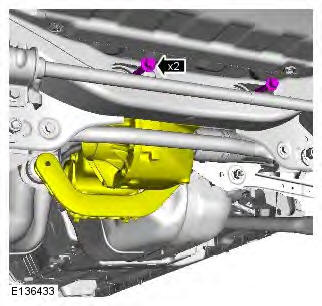
11.
- Carefully release the RH inboard halfshaft joint from the differential and tie aside.
- Carefully lower and remove the differential case.
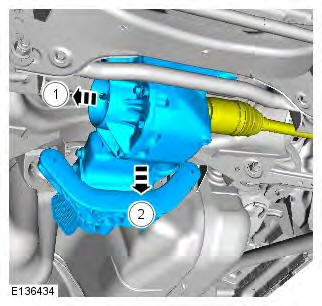
12. NOTE: Do not disassemble further if the component is removed for access only.
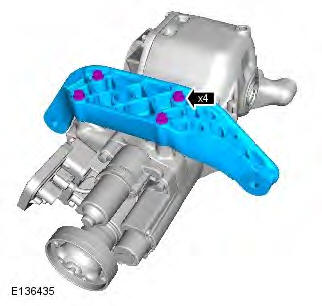
13. NOTE: Remove and discard the O-ring seal.
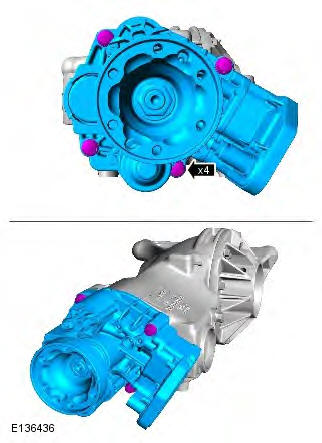
Installation
1. CAUTIONS:
Make sure that the area around the component is clean and free of foreign material.
A new O-ring seal is to be installed.
Make sure that new bolts are installed.
Torque: 24 Nm
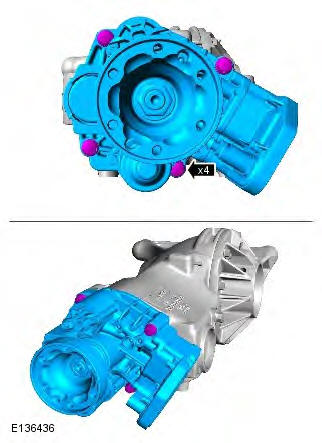
2. Torque: 35 Nm
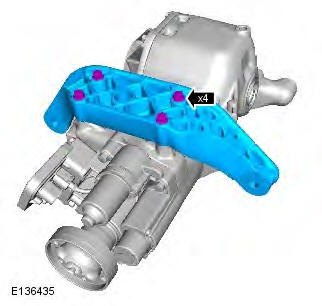
3. Using a transmission jack, carefully raise the assembly.
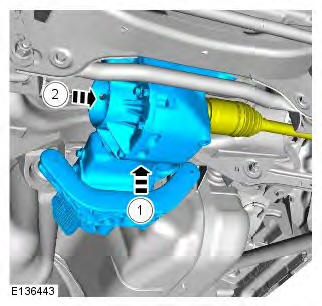
4. Torque: 110 Nm
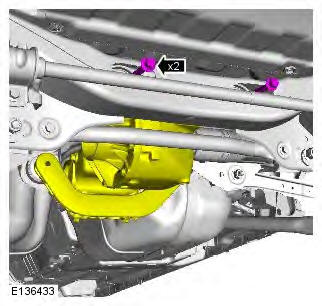
5. Torque: 175 Nm
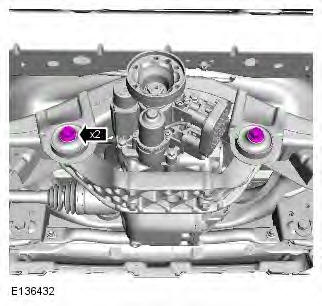
6. CAUTION: Make sure that new bolts are installed.
NOTE: Tighten the retaining bolts working diagonally. Torque: 40 Nm
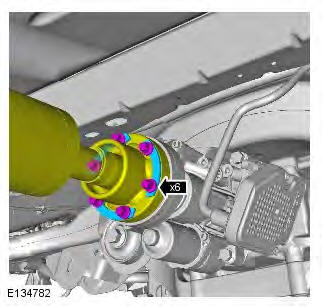
7.
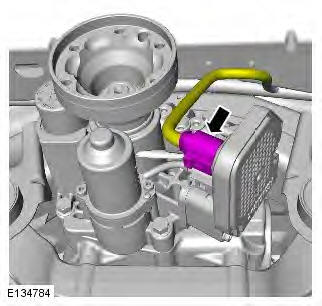
8.
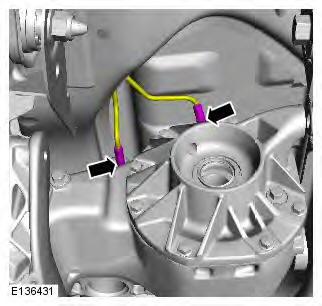
9. Refer to: Rear Halfshaft LH (205-05 Rear Drive Halfshafts, Removal and Installation).
10. Refer to: Exhaust System (309-00B Exhaust System - TD4 2.2L Diesel, Removal and Installation).
11. Install the LH rear wheel and tire.
Refer to: Wheel and Tire (204-04 Wheels and Tires, Removal and Installation).
12. Check and top-up the active on-demand coupling fluid level.
Refer to: Active On-Demand Coupling Filling (205-02 Rear Drive Axle/Differential, General Procedures).
13. Fill the differential case with fluid.
Refer to: Differential Draining and Filling (205-02 Rear Drive Axle/Differential, General Procedures).
Rear Drive Axle and Differential
Principles of Operation
For a detailed description of the driveline systems, refer to the relevant Description and Operation section in the workshop manual.
Inspection and Verification
CAUTION: Diagnosis by substitution from a donor vehicle is NOT acceptable. Substitution of control modules does not guarantee confirmation of a fault, and may also cause additional faults in the vehicle being tested and/or the donor vehicle.
NOTE: Certain driveline symptoms are also common to the engine, transmission, wheel bearings, tires, and other parts of the vehicle. For this reason, ensure that the cause of the trouble is in the driveline before adjusting, repairing, or installing any new components.
1. Verify the customer concern.
2. Visually inspect for system integrity and obvious signs damage.
3. If an obvious cause for an observed or reported concern is found, correct the cause (if possible) before proceeding to the next step
Visual inspection

4. If the cause is not visually evident, verify the symptom and refer to the Symptom Chart, alternatively, check for Diagnostic Trouble Codes (DTCs) and refer to the DTC Index.
Identify the Condition
Gear Howl and Whine
Howling or whining of the ring gear and pinion is due to an incorrect gear pattern, gear damage or incorrect bearing preload.
Bearing Whine
Bearing whine is a high-pitched sound similar to a whistle. It is usually caused by worn/damaged pinion bearings, which are operating at driveshaft speed. Bearing noise occurs at all driving speeds. This distinguishes it from gear whine which is speed dependent.
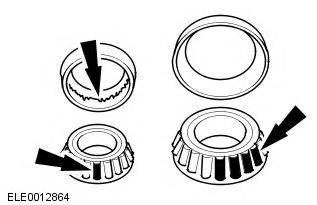
As noted, pinion bearings make a high-pitched, whistling noise, usually at all speeds. If however there is only one pinion bearing that is worn/damaged, the noise may vary in different driving phases.
A wheel bearing noise can be mistaken for a pinion bearing noise.
Chuckle
Chuckle that occurs on the coast driving phase is usually caused by excessive clearance between the differential gear hub and the differential case bore.
Damage to a gear tooth on the coast side can cause a noise identical to a chuckle. A very small tooth nick or ridge on the edge of a tooth can cause the noise.
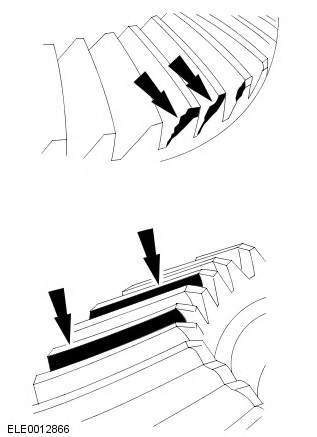
Knock
Knock, which can occur on all driving phases, has several causes including damaged teeth or gearset.
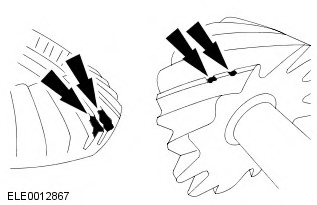
A gear tooth damaged on the drive side is a common cause of the knock.
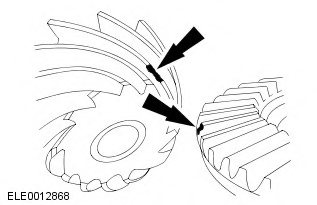
Clunk
Clunk is a metallic noise heard when the automatic transmission is engaged in REVERSE or DRIVE. The noise may also occur when the throttle is applied or released. Clunk is caused by transmission calibration, backlash in the driveline or loose suspension components and is felt or heard in the vicinity of the rear drive axle.
Bearing Rumble
Bearing rumble sounds like marbles being tumbled. This condition is usually caused by a worn/damaged wheel bearing.
The lower pitch is because the wheel bearing turns at only about one-third of the driveshaft speed. Wheel bearing noise also may be high-pitched, similar to gear noise, but will be evident in all four driving modes.
Symptom Chart
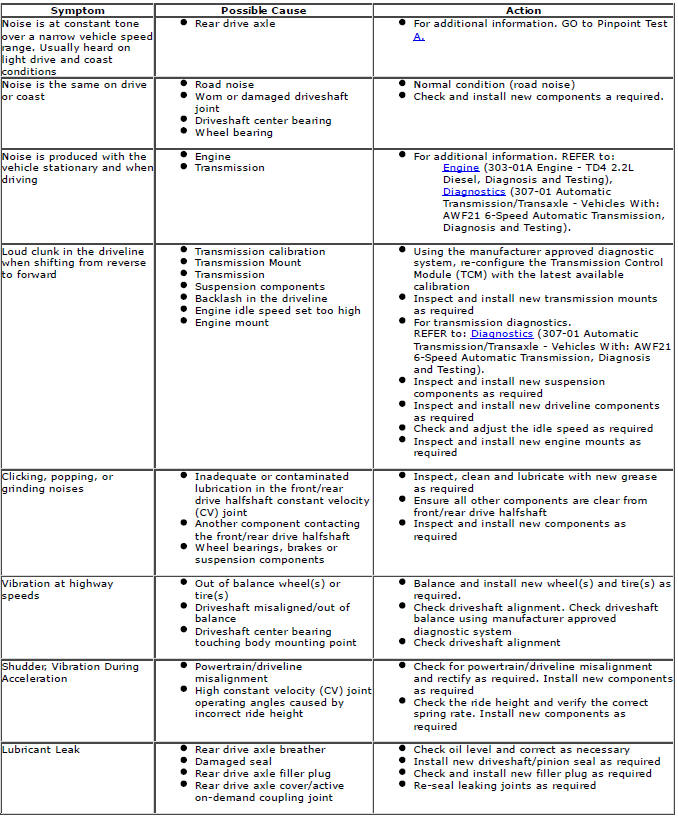
Pinpoint Tests

For a list of diagnostic trouble codes that could be logged on this vehicle, please refer to Section 100-00.
Rear Drive Axle/Differential
Lubrication

General Specification

Torque Specifications

* New nuts/bolts must be installed

